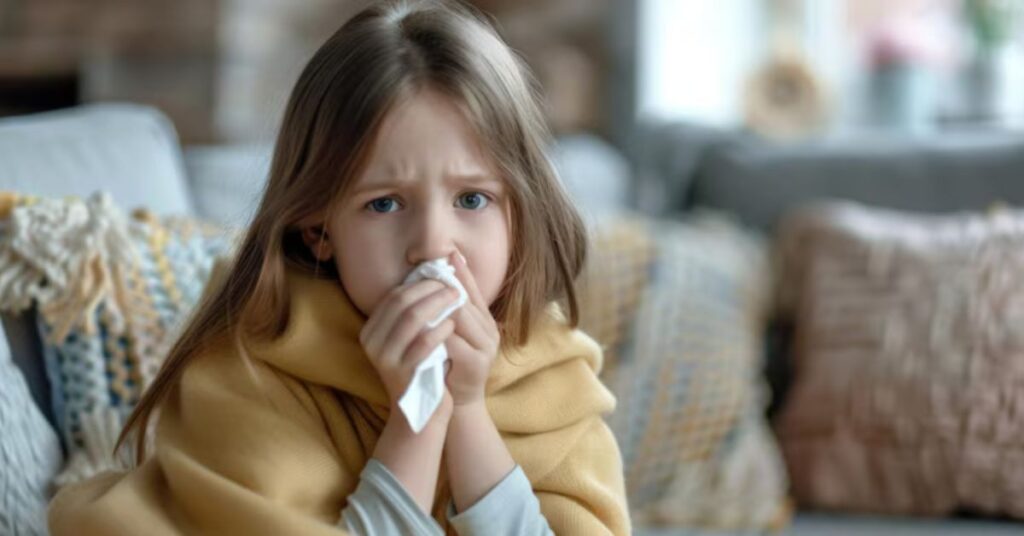The common cold is one of the most frequent illnesses affecting children worldwide. As a pediatric doctor, understanding and recognizing the early signs and symptoms of the common cold in children is vital to managing the illness effectively and ensuring the child’s comfort. We emphasize early detection, parental awareness, and proper care to help children recover quickly and safely.
What Is a Common Cold in Children?
The common cold, medically known as viral rhinitis, is caused by a variety of viruses, most commonly rhinoviruses. Children are especially prone to catching colds due to their developing immune systems and frequent exposure in school or daycare settings. Typically, cold symptoms last about 7 to 10 days but can vary depending on the child’s age and overall health.
First Signs That Your Child Has a Cold
Recognizing the early signs of a cold in young children is crucial for timely care and preventing complications. The earliest indications often include subtle behavioral changes like increased fussiness or mild discomfort, along with physical symptoms such as a scratchy throat or nasal congestion.
Runny Nose and Blocked Nose in Kids
Nasal symptoms are among the hallmark signs of a common cold in children. Initially, the nose may become clear and watery but can turn thick and yellow or green as the cold progresses. Nasal congestion often causes discomfort and may interfere with breathing, particularly during sleep.
How to Help with Nose Problems
- Use a humidifier to keep the air moist.
- Saline nasal sprays can help loosen mucus.
- Encourage your child to blow their nose gently.
Sore Throat in Children
A sore throat often accompanies a cold and may present as redness or irritation in the throat. Younger children may have difficulty articulating this discomfort, so watch for signs such as refusal to eat, crying while swallowing, or increased drooling.
Coughing During a Cold
Coughing is a common symptom of a cold and can vary in type and intensity. Initially, the cough is typically dry and irritating, evolving into a productive cough as mucus accumulates. Persistent coughing that worsens or disrupts sleep may require medical evaluation.
What Type of Cough Does Your Child Have?
- Dry, tickling cough: Early phase.
- Wet or productive cough: Later stage.
- Nighttime cough: Can cause sleep disturbances.
Fever and Chills in Children
Fever is not always present in every cold but can occur, especially in younger children. It typically develops within the first two days of symptoms and may be accompanied by chills and body aches. Mild fevers (below 102°F) are common and usually resolve without intervention.
Sneezing Is a Common Cold Sign
Sneezing is an early and frequent symptom of the common cold in children. It occurs as the body attempts to expel irritants from the nasal passages. While generally harmless, frequent sneezing can be disruptive and signal the onset of other cold symptoms.
Tiredness and Cranky Behavior
Children suffering from a cold often exhibit behavioral changes such as increased tiredness, irritability, and decreased activity levels. These signs may precede physical symptoms and should alert parents to monitor their child more closely.
Eating Less When Your Child Has a Cold
Loss of appetite is common during a cold, mainly due to sore throat, congestion, and fatigue. While temporary, it is important to encourage hydration and offer small, nutritious meals to maintain energy levels.
Watery Eyes and Headaches in Children
Besides classic cold symptoms, watery eyes and mild headaches can also occur but are often overlooked. Watery eyes result from nasal congestion affecting tear ducts, while headaches may arise from sinus pressure.
Signs That It Could Be More Than a Cold
While most colds resolve without complications, certain symptoms warrant immediate medical attention:
- High fever lasting more than 3 days.
- Difficulty breathing or persistent wheezing.
- Severe ear pain or drainage.
- Dehydration signs (dry mouth, no tears, reduced urination).
- Unusual drowsiness or persistent vomiting.
If your child exhibits these symptoms, visit Pediatric New Born Clinic promptly.
Cold Symptoms in Babies vs. Older Children
Infants often show less obvious signs of a cold but may display irritability, poor feeding, and difficulty sleeping. Older children can articulate their symptoms better and typically experience more pronounced nasal congestion and sore throat.
Cold Symptoms Change With the Weather
Cold symptoms tend to peak during fall and winter months when viruses spread more easily due to close indoor contact and dry air. Seasonal allergies can also mimic cold symptoms, complicating diagnosis.
Simple Tips for Parents to Care for a Sick Child
- Ensure adequate fluid intake to prevent dehydration.
- Use age-appropriate fever reducers if necessary.
- Maintain good hygiene to prevent spreading the virus.
- Monitor symptom progression daily.
- Provide plenty of rest.
When Should You Take Your Child to a Doctor?
Seek medical care if your child experiences:
- Breathing difficulties.
- Persistent high fever.
- Severe ear pain.
- Unusual lethargy or persistent crying.
- Cold symptoms lasting more than 2 weeks.
At Pediatric New Born Clinic, we are here to provide expert evaluation and treatment for your child’s cold or any related complications.
Conclusion
Understanding the signs and symptoms of the common cold in children helps parents and caregivers respond effectively to their child’s illness. Early recognition of symptoms like runny nose, coughing, sneezing, and behavioral changes ensures timely care and comfort. Always monitor for warning signs and consult your pediatrician, especially at Pediatric New Born Clinic, to provide the best care for your child’s health.



